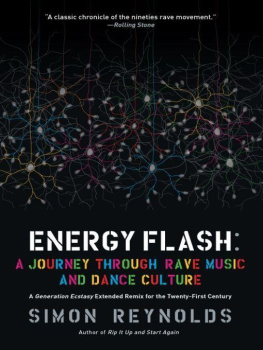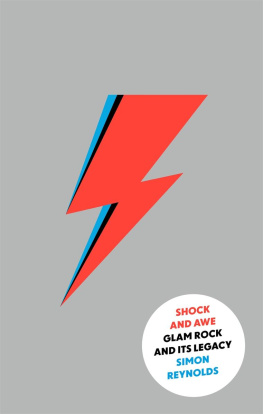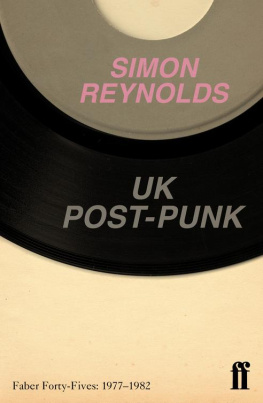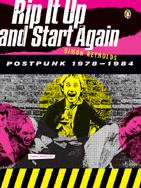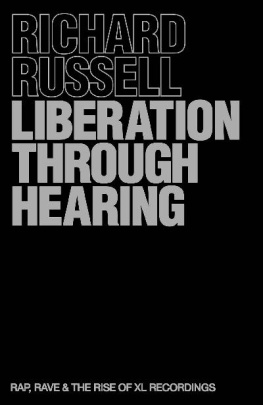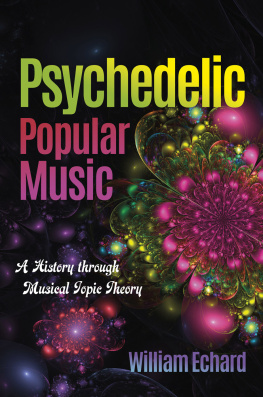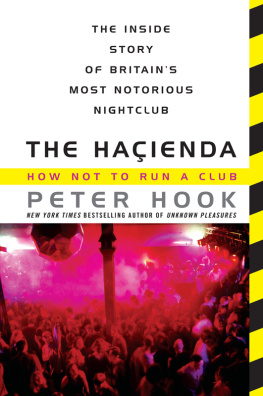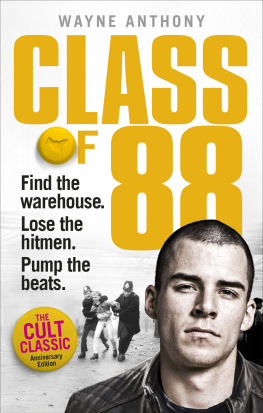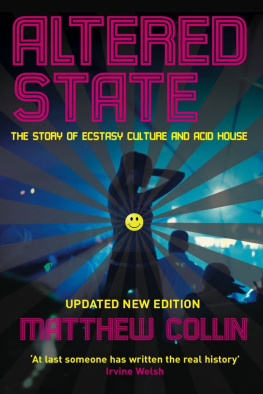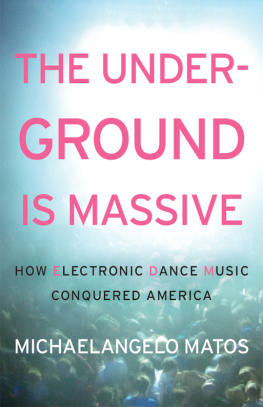Table of Contents
Acknowledgements
First up, thanks to Lee Brackstone for catalyzing the idea of Energy Flash Mark 2.
Thanks to my editor Richard Milner and to all at Picador, and to my agent Tony Peake.
The updated portions of Energy Flash 2008 drawn on articles written between 1998 and the present. Theres too many magazines and editors to mention, but in particular I would like to thank Heiko Hoffman at Groove , the Wire collective (Tony Herrington, Chris Bohn, Rob Young, Anne Hilde Neset), Chuck Eddy at Village Voice , and a series of music editors at Spin (Will Hermes, Sia Michel, Charles Arron). Trance Mission is partly based on a feature that appeared in Spin magazine, June 2000 and Two Steps Beyond remixes material from features in Spin (November 2000) and Vibe (April 2001).
Id also like to thank the inventors of Blogger for enabling me to waste thousands and thousands of hours of my life, in the process generating vast quantities of wordage and thoughtage on grime, micro-house, dubstep, and other facets of post-1998 dance culture, which have naturally fed into this updated Energy Flash . Seriously, though, Blogger its a wonderful thing, and it was both splendid and necessary to have an outlet while occupied with Rip It Up and Start Again .
An inventory of all the people Ive had fruitful and fun conversations about dance music this past decade in person and/or via email and/or through interblog debate would make for a document running to several pages. But I must mention Paul Kennedy, Matthew Woebot Ingram, Bat (a.k.a. Anindya Bhattacharyya), Bethan Cole, Luke Heronbone Davis, Geeta Dayal, Michaelangelo Matos, Andy Battaglia, Tim Finney, Philip Sherburne, Simon Silverdollar Hampson, Martin Clark, Mark K-Punk Fisher, Tony Marcus, Nick Gutterbreakz Edwards, Kode 9, Tobias Rapp, DJ Ripley and Kid Kameleon (big up ya chests for helping with the DJ chapter), Jess Harvell, Ronan Fitzgerald, DJ Clever, Derek Walmsley, Brendan M. Gillen. Many of these folk Ive shared dance floors with. Thanks to all who turned me onto stuff through tips or acts of musical generosity. Extra-large big up to those who sent me pirate tapes from Blighty, bless you all , especially Bethan C. Burhan Tufail (RIP, miss you), Simon Silverdollar, Luke Heronbone...
And of course, it does almost without saying, but Ill say it: love and thanks to my wife Joy Press, my boy Kieran and my little girl Tasmin.
Acknowledgments to the Original 1998 Edition
Massive shout to Sam Batra for getting me into this raving caper in the first place; thanks for all the adventures. Big shouts to the rest of the Batra possee (Claire Brighton, Glenda Richards) and other clubbing comrades (Susan Masters, Jane Lyons), not forgetting the original jungle-theory crew (Kodwo Eshun, Rupert Howe).
Thanks to the following for providing information/contacts/clippings, loaning/taping records or radio transmissions, general theory-stim, and diverse forms of assistance: Adrian Burns, Jill Mingo, Sarah Champion, Kodwo Eshun, Jim Tremayne @ DJ Times, Rupert Howe, Jones, David Pescovits, David J. Prince, Steve Redhead, Pat Blashill, Rick Salzer, Erik Davis, Chris Scott, Dave Howell, Stephanie Smiley @ Domestic, Burhan Tufail, Achim Szepanski, Daniel Gish, Sebastian Vaughn @ Network 23, Tom Vaughan, Mike Rubin, Bat (A. Bhattacharyya), Chris Sharp, Barney Hoskyns, Matt Worley, Craig Willingham a/k/a I-Sound, and Ian Gittins (cheers for the Bez anecdote!). Apologies to anyone I forgot.
Special thanks to my brother Jez Reynolds for the music-technology lowdown and for taking us to Even Furthur, to my parents Sydney and Jenny Reynolds for the cuttings supply, and to Louise Gray for the archival material.
Extra special thanks to my wife Joy Press for keeping my spirits up, cracking the whip, being the books first reader, and generally acting as the serotonin in my life.
Big thanks to my agents, Tony Peake and Ira Silverberg, and editor Richard Milner.
Gratuitous shout to Foul Play for making (and remixing) some of the rushiest records of all time. Condolences to FPs John Morrow concerning the tragic death of partner Steven Bradshaw in August 1997.
Thanks to those who granted interviews specifically for this book: Juan Atkins, Derrick May, Eddie Flashin Fowlkes, Kevin Saunderson, Carl Craig, James Pennington, Mark Moore, Paul Oakenfold, Barry Ashworth, Louise Gray, Mr C, Jay Pender, Joe Wieczorek, Gavin Hills, Jack Barron, Helen Mead, Steve Beckett, Doug Baird of Spiral Tribe, Chantal Passamonte, Dego McFarlane, Marcus formerly of Don FM, Jeff Mills, Richie Hawtin, John Aquaviva, Wade Hampton, Frankie Bones, Heather Hart, Dennis the Menace Catalfumo, DB, Scotto, Jody Radzik, Nick Philip, Malachy OBrien, Scott and Robbie Hardkiss, Steve Levy, Todd C. Roberts, Les Borsai, Daven Michaels.
This book contains samples from my journalistic output of the last ten years. Thanks to the following editors for giving me the space to explore ideas: Mark Sinker and Tony Herrington at The Wire, David Frankel and Jack Bankowsky at Artforum, Matthew Slotover at Frieze, Ann Powers and Eric Weisbard at Village Voice, Matthew Collin and Avril Mair at iD, Paul Lester at Melody Maker, Nick Terry at The Lizard, and Philip Watson at GQ. (Parts of Chapter 11: Marching Into Madness first appeared as Gabba Gabba Haze in GQ, October 1996).
Authors Note
This expanded edition of Energy Flash does not contain the discography or bibliography in the original 1998 version. Partly this is for reasons of space, but also because during the ten years since the book came out, the unevenness of the original discography has become steadily more apparent, and the idea of rectifying that (let alone expanding it to cover the last decade) made me feel all weak at the knees. For those who feel the absence, go to http://energyflashdiscogbibliog.blogspot.com, where you will find the original discography and bibliography. The latter is enhanced with a further reading list, a selection of useful books and significant articles that have come out since Energy Flash was first publishing.
Preface to the Updated Edition
Every so often this past decade, someone has asked me what Id do differently if I was writing Energy Flash now what do I feel I missed? Is there anything I got wrong or where my ideas have turned 180 degrees? And usually Ill make some noises about maybe making the book a bit more comprehensive and impartial: having more on house as it diversified in the nineties, being less dismissive of trance and progressive. Or Ill say that I would maybe deal more with the prehistory of rave: the street sounds culture of the UK in the eighties, electro and things like that; post-disco club styles; or the way industrial in America and Electronic Body Music in Europe fed into rave.
If I had actually done all this, Energy Flash would certainly be more even-handed and authoritative. It would probably be twice the size. But it would be half the book. Because what makes Energy Flash work is the partisan zeal burning through it, the unbalanced ardour for one particular sector of electronic dance culture: hardcore rave and all it spawned. This is what makes the book an authentic testament of obsession and belief. And if you think about it, thats how all true musical fandom manifests. In the abstract, Im patriotic for dance culture as a whole; Im on its side, every last bit of it. But in practice, therere certain zones that I really feel passionate about. And thats how it is with rock fans and hip-hop fans too. In certain contexts, rap or rock as a whole is the Cause, something you stand by. But once the focus shifts internal to the genre, your passion is focused around certain areas or artists. Other subgenres within the larger formation now become the enemy, because they are letting down the side; they dont live up to all that rock/rap/rave can be. Hence the oscillation within Energy Flash between bigging up the Rave-Dance-Electronic Project as a whole and championing particular strands of it, those genres I consider the forward sectors.

